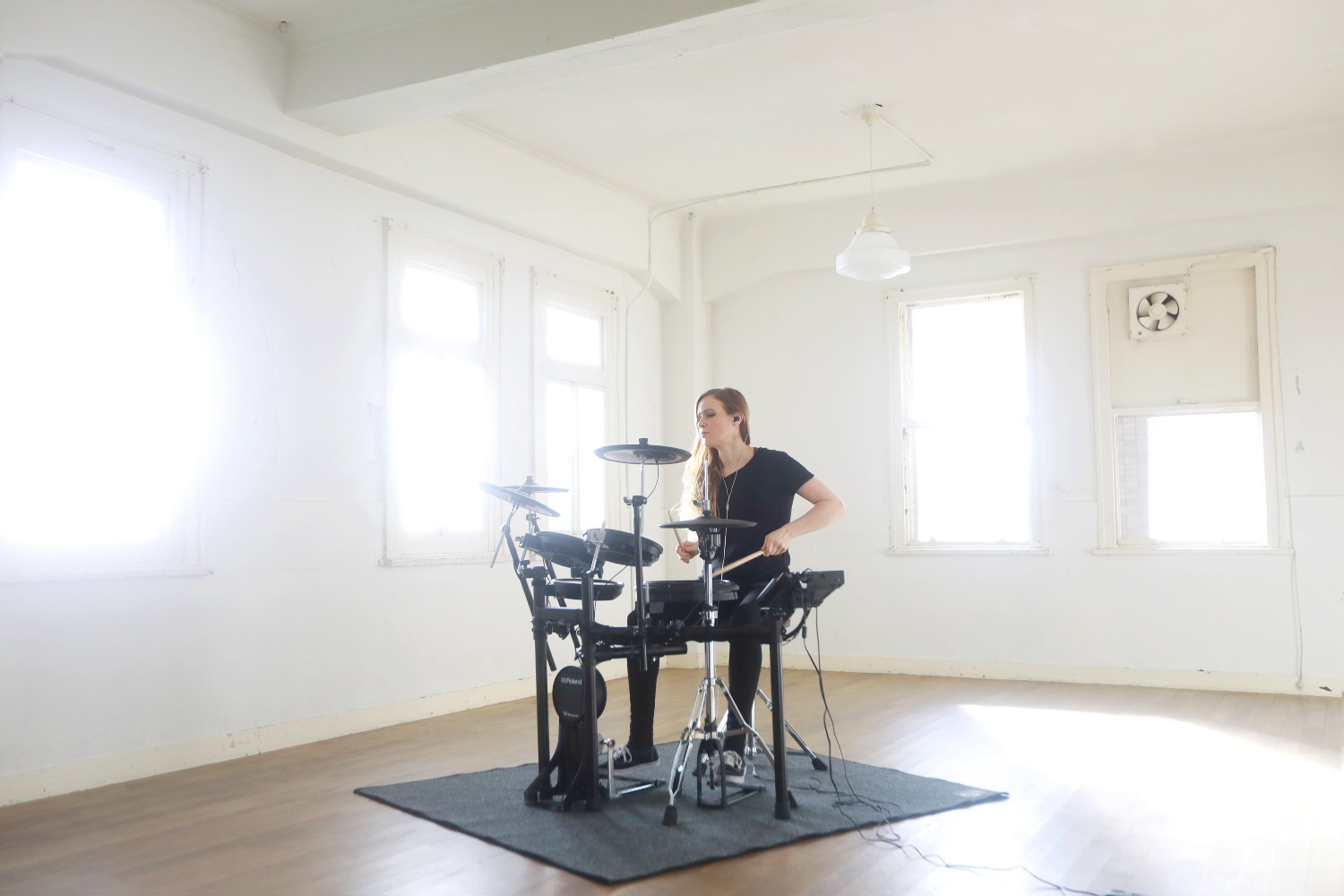Since their inception in the mid 1970s, electronic drums have evolved to hold such esteem for both drummers and music makers, it's almost unfathomable to think of a world without them
Being one of the true innovators in the electronic drum world, Roland has pioneered not only the feel and sound of electronic drums, but have continually pushed the boundaries of how they integrate into live and studio spaces, as well as the home environment.
Combining the quality of the most meticulously-recorded drums and percussion sounds with the convenience of a compact setup, Roland V-Drums tick a ton of boxes for those wanting to be able to practise, write, and record either at home, or with the ability to quickly and conveniently transport their setup to another space. For many of us, having a full acoustic kit setup in the house, garage, or home studio just isn’t realistic, and it therefore seems blaringly obvious to say, but this is where electronic kits are unparalleled in their ability to offer all of the benefits that a near-silent playing experience can bring. A distinct lack of disgruntled neighbours or housemates being one over quoted example, and I for one can certainly attest to that!
Read all the latest features, columns and more here.
To put things bluntly, Roland’s dominance in the electronic drumming world has been more or less unrivalled, particularly since the 1990s. As mentioned earlier, Roland has been responsible for helping shape the feel of electronic kits, bringing them as close to the response of an acoustic kit as possible, it would seem. With the release of the now-coveted Roland mesh drum heads in 1997, an evolution was born within the electronic drumming community – as up until then they had been used to the feel and response of mostly rubber type pads available at the time.
The Roland mesh drum head not only changed the feel of the playing surface straight off the bat, but also allowed users to adjust them. For jazz players, this meant having a mesh head that could be cranked up, and for hard hitting rock players, something less responsive, all of which replicated the feel and response of an acoustic drum head.
While not every Roland kit came with mesh heads as standard when first introduced, now in 2022 every kit other than the entry level TD-1K has mesh heads as standard. What’s more, Roland certainly hasn’t just sat back on this innovation since 1997, but rather, have tweaked, refined, and developed this technology further in conjunction with their electronics and physical designs to get their pads even closer to that of an acoustic drum. This has led to larger head surfaces, and in the case of the mid-tier TD-17 series, the PDX-12 (12” diameter) snare pad comes as standard. While this may seem slightly trivial, having an electronic mesh-head snare being closer to the actual size of a “typical” 14” snare drum allows for a far more realistic touch, helping bring out all of the idiosyncrasies of a snare drum, depending on where the drum is struck. This paired with a sophisticated drum module, creates a wildly authentic drumming experience – far more so than the smaller surface pads of the past.
So for players either continually switching between electric and acoustic setups or for those making a more permanent transition to using electronic drums, these changeovers have become more seamless.
Roland’s flagship V-Drum modules have always possessed some of the most intricate, detailed editing capabilities in the electronic drums universe; with near limitless tweaking of sounds and overall kit customisation. In true Roland fashion, these desirable top-tier features have indeed trickled their way down into the mid-range kits over the years. The TD-17 module for example, hosts some of the more “standard” features including the ability to adjust tuning/muffling of each pad, as well as individual velocity sensitivity and volume.
A more advanced and I must say, very exciting feature of the TD-17 series is User Sample Importing. This allows users to import their own samples via SD card into the module and be assigned to a chosen pad. This has been a highly requested feature for years and this alone really does take things to a whole new level for electronic drum modules!
Drum sample companies such as CP samples have even created dedicated expansion libraries specifically for the TD-17 module. Played and created by none other than Chris Whitten (drummer for Paul McCartney, Dire Straits).
Having a measurable practising tool as a drummer is pretty (excuse the pun), immeasurable. The TD-17’s coach mode I have to say is pretty genius in this regard. If only I’d had such a tool in my earlier drumming days… Never one to stop at just the hardware side of things, Roland also offers a wealth of free online practise exercise videos and online lessons for drummers wishing to really push themselves and improve their skills and development.
The VAD (V-Drums Acoustic Design) has been an exciting new addition to the Roland V-Drums line. These drums really do bridge the final gap between electronic and acoustic drums. While the mid-range VAD306 model has more shallow shells compared to the full-sized flagship VAD706, the large diameter pads of the VAD306 (12” snare, 10” rack toms, 12” floor, and 18” kick) are very much acoustic in feel. The accompanying double-braced hardware makes for an even more authentic acoustic kit stage presence – a wonderful extension of this whole line and a detail that clearly hasn’t been overlooked.
Having been able to take a deep dive into Roland’s current range of V-Drums – particularly the TD-17 series, it’s no surprise this line has picked up some worthy industry awards. This all being testament to Roland’s ability to stay ahead of the curve in development, technology, and customer demand.
Head to Roland for more on their V-Drum Series.

